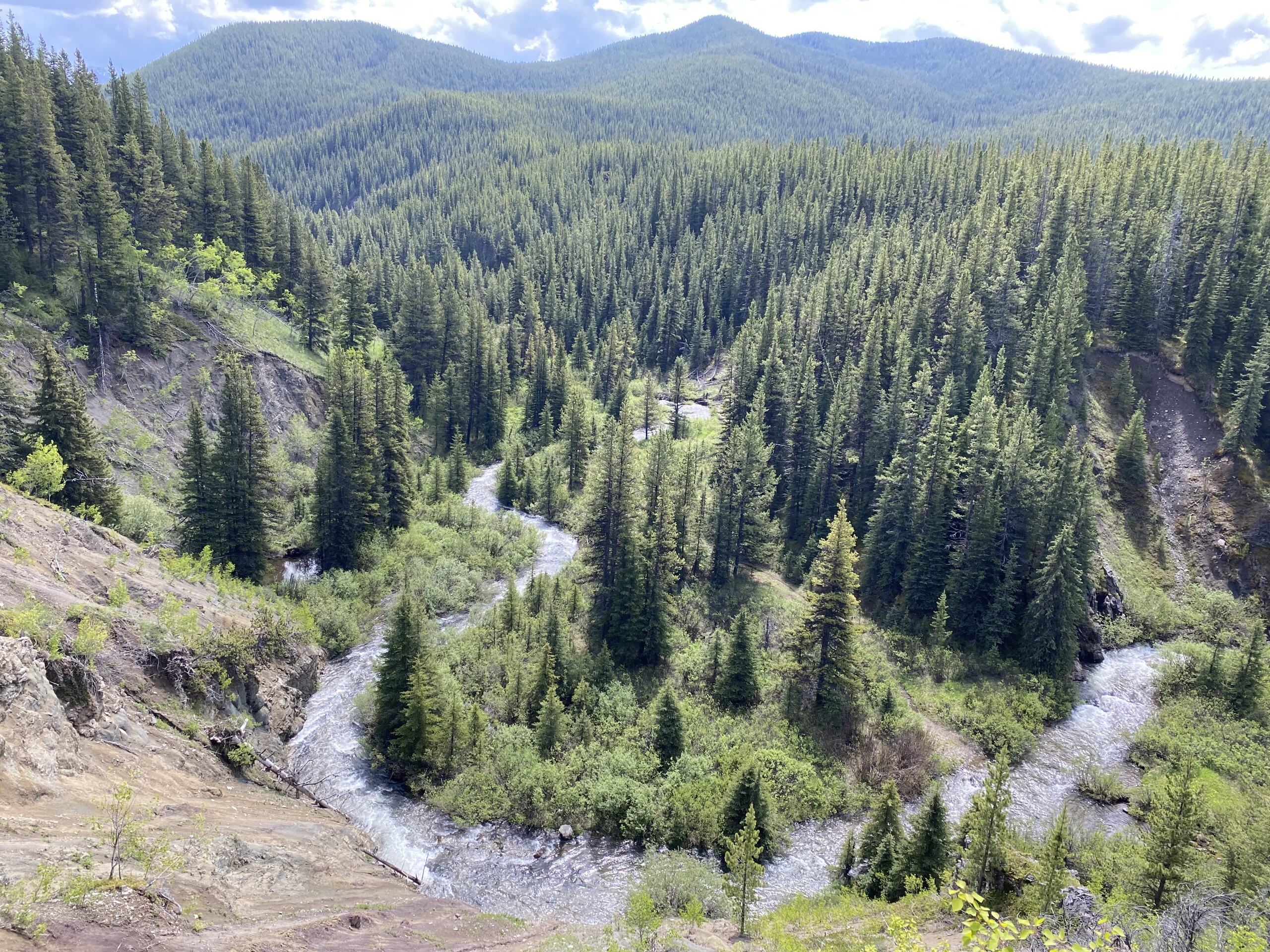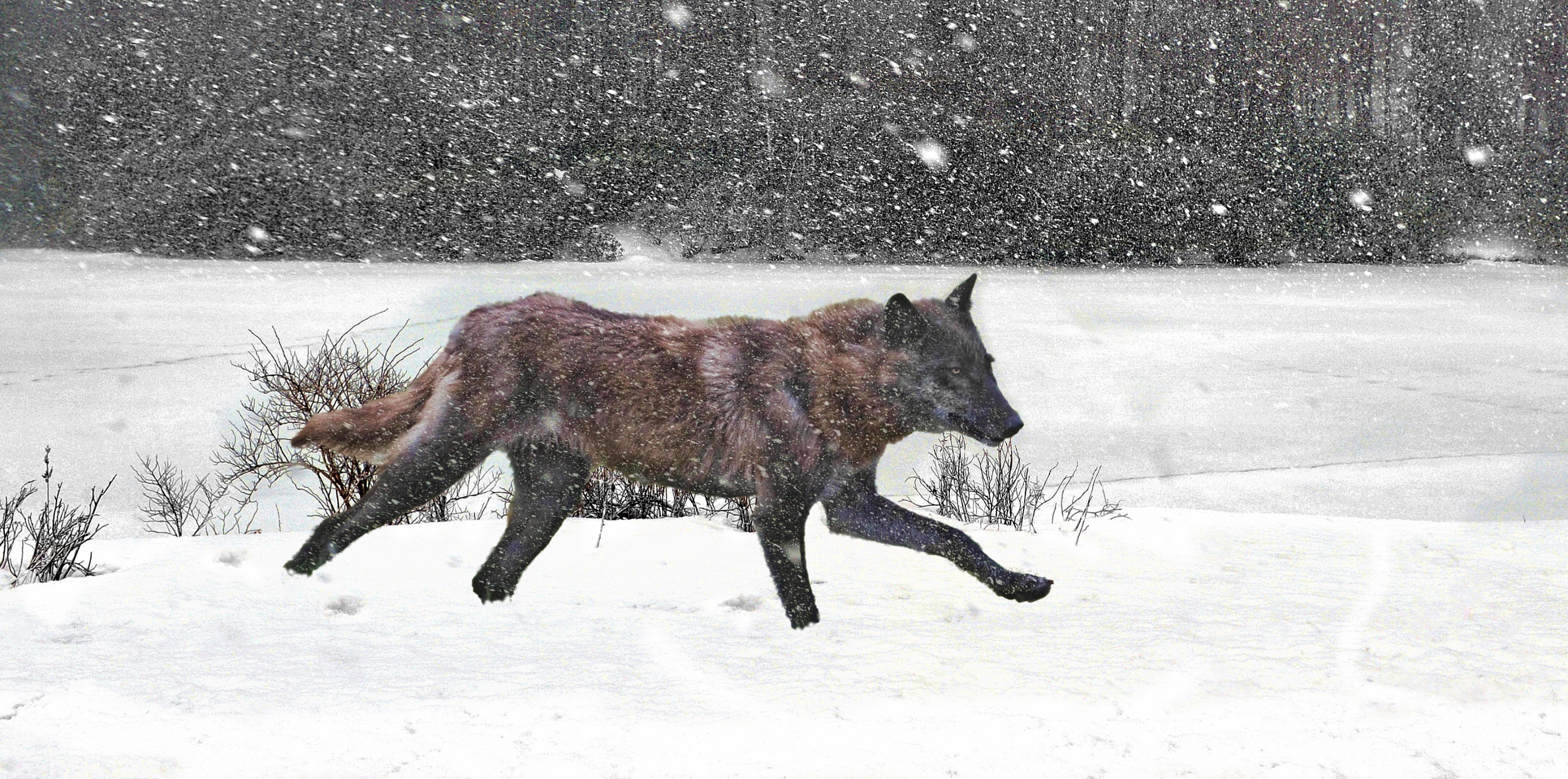In case you missed it, the opportunity for Albertans to provide feedback and help set the direction of the provincial budget is closing tomorrow January 19, 2024.
If you want to submit feedback, but aren’t sure what to say, you can find the priorities we have drafted alongside CPAWS Northern Alberta below. Prioritizing these items will go a long way toward ensuring the preservation of our province’s invaluable natural assets. Moreover, the collective economic benefits of protected areas and well-managed public lands far outweigh any other government expenditure.
Alberta can set an example for the stewardship of parks, public lands and waters, wilderness and protected areas both nationally and internationally — if we choose to do so.
Parks and Public Land
Alberta’s parks and protected areas contribute to the overall quality of life of all Albertans. Our parks provide clean drinking water, carbon storage, and habitat for the wildlife many of us admire, and depend upon for food through subsistence livelihoods. Funding the creation of new protected areas and allocating the appropriate resources for effective management of existing ones is a wise investment for economic diversification and supporting the interests of Albertans.
Critically, parks management can only be effective if sufficient resources are available, including investment in ongoing scientific monitoring to inform management decisions, sufficient enforcement, and long-term infrastructure and operations capacity to ensure that safety and environmental protection is maintained.
Budget priorities for Parks and Public Land Management include funding towards:
- Substantial consultation in the development of all new parks and public lands legislation, including a robust plan to engage members from all stakeholder groups and the broader public; thorough government to government consultation with Indigenous Peoples; and a plan as to how this consultation will be incorporated and reflected in the development of legislation.
- Core recreation management in parks and public lands. Recreation should not be based solely on a user-pay model, nor should it be a barrier to low-income Albertans to access parks or public land. Any trail fees collected should be dedicated to the restoration, conservation, and management of parks and public lands in addition to trail maintenance and enforcement.
- Funding from the Kananaskis Conservation Pass should be reflected through direct restoration and conservation measures within the designated pass area.
- Ensuring that park partners meet Alberta Parks standards for conservation and public use. This must include funding for monitoring, and reporting for the transparency, and accountability of parks partnerships. Budget lines for these partnerships should clearly show overall costs.
- Development of a regional transportation strategy for the Bow Valley, prior to any potential investment in large-scale transportation projects in the Bow Valley.
Budget priorities for Protected Areas include funding towards:
- Operation and management of existing protected areas, including adequate staffing and long-term infrastructure.
- Increased protection of underrepresented ecoregions within our parks and protected areas system, such as native grasslands and areas within the Parkland.
- Creation of Indigenous Protected and Conserved Areas (IPCAS) as proposed by Indigenous communities, such as Bistcho Lake.
- Designation and expansion of protected areas through sub-regional and regional plans, such as the North and South Saskatchewan Regional Plans; Upper and Lower Peace Regional Plans; and the Athabasca Regional Plan.
- Supporting provincial partnership in public consultation on a potential National Urban Park in the North Saskatchewan River Valley of the Edmonton metropolitan region.
- Growth and support for protected areas, to contribute to Canada’s national and international commitments to protect and conserve 30% of terrestrial and inland waters by 2030.
- Irrigation expansion in southern Alberta that stipulates a full environmental assessment be undertaken before projects can commence and that funding will be withdrawn if there are significant adverse impacts on the environment.
Land Use Planning
Land use planning under the regional planning framework has proven to be an effective management tool for industry, recreation, and conservation on public lands. Incomplete planning processes must be completed with appropriate funding for consultation, design, implementation, and enforcement to reach their full potential.
Budget priorities for Land Use Planning include funding towards:
- Renewal of the South Saskatchewan Regional Plan and completion of sub-regional plans including:
- Implementation and enforcement of the Recreational and Land Footprint Management Plans in the Porcupine Hills and Livingstone region,
- Completion of the Human Spatial Footprint Plan in the Porcupine Hills and Livingstone region,
- Development of Recreational and Landscape Management Plans for the East Kananaskis Ghost region, and;
- Completion of the Biodiversity Management Framework.
- Linear footprint and recreation planning prior to new trail plans and development as part of the Trails Act. Investment in trail maintenance should prioritize the reduction of impacts of trails on the environment rather than the creation of new trails or maintenance of trails solely for the benefit of recreation.
- Expanded investment into sub-regional plan development to meet woodland caribou species at risk recovery objectives and timelines. 7 of the 11 sub-regional plans for caribou have missed the committed to deadlines, and only 2 out of 11 sub-regional plans have been finalized.
- Regional planning in the Upper and Lower Peace.
- Completion of the North Saskatchewan Regional Plan.
- Completion of the ten-year review of the Lower Athabasca Regional Plan, with special attention to including the recommendations outlined in the Review Panel Report 2015 for the Lower Athabasca Regional Plan, and completion of the Biodiversity Management Framework.
- Further assessment of trail damage in sensitive areas and implementation of appropriate closures.
Species at Risk
Over 90 species in the province are listed in the Species at Risk Act and the Alberta Wildlife Act. Fulfilling Alberta’s commitment to species at risk requires a preventative and restorative approach. Funding the protection of natural habitat at a landscape level can prevent further habitat degradation, fragmentation, and the associated recovery costs. Additionally, funds are needed for the restoration and reclamation of previously damaged habitat and the implementation of species recovery plans.
Budget priorities for Species at Risk include funding towards:
- Caribou recovery, including habitat protection, especially as Indigenous Protected and Conserved Areas, such as the proposal to protect caribou habitat around Bistcho Lake.
- Recovery of wood bison populations, particularly the Ronald Lake and Wabasca herds on provincial lands, and the protection of habitat as Indigenous Protected and Conserved Areas.
- Implementation of recovery plans for West Slope Cutthroat Trout, Bull Trout, Athabasca Rainbow Trout, and Grizzly Bear.
Coal Exploration and Mining Legislation
The rescission of the decades-old Coal Policy left a gap in land-use planning and increased interest in coal exploration on the Southern Eastern Slopes. While the Coal Policy has been reinstated, the long-term direction on coal is still unclear and creates the opportunity to develop stronger protections for the region. While industrial interests can benefit our economy, coal mining in the Eastern Slopes would not have a net positive effect on the economy. Industrial development should not come at the expense of other more sustainable economic activities in these regions, such as recreation and tourism, ranching, guiding, and outfitting.
Budget priorities for Coal Exploration and Mining Legislation include funding towards:
- Development of a new Coal Policy. In lieu of a new policy, legislated land-use plans must be completed to replace the rescinded Coal Policy. New policy or land-use plans must provide greater protection for the Eastern Slopes, as this zone of the province provides drinking water for most Albertans and others across the prairies.
- Funding for communities whose economies rely largely on coal development must continue to ensure a fair transition to more sustainable economic opportunities for workers and families.
- Support to the sustainable development of renewable energy projects on former brownfield or degraded public lands.
- Open and transparent analysis of oil and gas and legacy coal mine liabilities. Future budgets should include dedicated funding for cleanup of these legacy sites.
- Review of existing coal mine royalty rates to ensure Albertans are getting their fair share.
More News

New Poll: Conservation is a Core Value, Not Fringe Concern, for Most Albertans

Fine Issued to Forestry Operator for Erosion Control Failures


